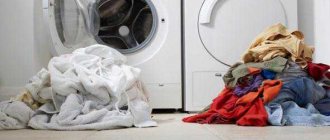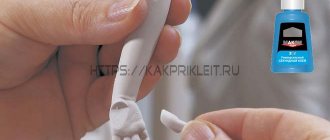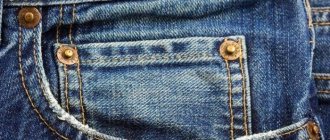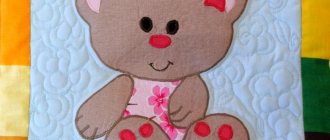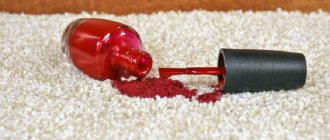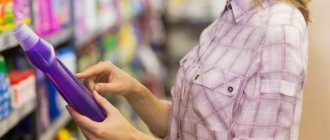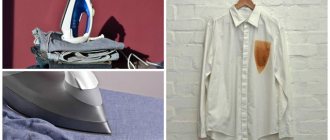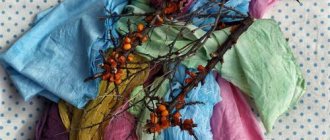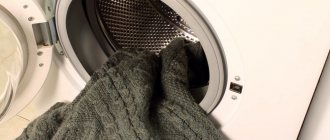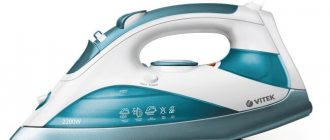Often fabric products need repairs, hemming, etc. Thread stitching is not always appropriate, as it can spoil the appearance of the finished product and looks rough on light fabric. To perform such work, a glue web will help, which can easily correct the situation without being noticed. Before using it, you need to study the instructions for gluing it and take into account some tips.
How to apply duct tape to curtains?
Practical recommendations for using spiderweb adhesive tape
- Straighten the fabric and place the adhesive tape under the edges to be glued so that it is completely covered by the fabric;
- For tulle, use a sheet of A4 paper, which you place over the seam, and press on top with an iron for 25-40 seconds.
13 Dec
2022 Interesting materials:
How to measure the inner diameter of a pipe? How to measure the inner diameter? How to measure height using a level? How to measure the height of a building? How to measure a plot of land in acres? How can I change the publication date on Instagram? How can I change the language on the keyboard? How can you change the contents of spreadsheet cells? How can I change the appearance of a table? How can you measure gas pressure?
How to glue cobwebs onto fabric: detailed instructions
When gluing the tape to the material, you must follow the instructions:
- The clothing is ironed at the gluing site to ensure even distribution of the adhesive strips.
- The strip is applied to the back of the element and smoothed from above with a heated iron. When exposed to heat, the glue begins to melt. The iron is drawn to the end of the strip, the excess is cut off.
- After tightly gluing, the top paper layer is removed. A diamond adhesive pattern remains on the material.
- The element to be glued is placed on top of the glue, with the wrong side down. This is done with an iron in the same way as in the beginning. When heated, the glue melts and penetrates the structure of both fabrics, bonding them together.
If the glue diamonds do not attach well to the fabric, it is recommended to spray the material with a spray bottle and carry out the procedure again with an iron.
Useful video on the topic:
What glue is suitable?
If you don’t have a mesh at hand or the glued web begins to come off and additional smoothing does not help, then the best option would be to use fabric glue.
There are many options for glue, each with a different composition and method of use. The most common:
- Fabric glue “Secunda” is a transparent base, odorless, does not spread, which makes it easier to use, does not leave stains, is waterproof, and resistant to detergents.
- Fabric glue “Liquid Thread” is a transparent base, provides a strong and high-quality connection of fabric, and is easy to use.
- JAVANA adhesive is heat-resistant, not afraid of water, provides a reliable connection, and is fixed when ironed.
There are also adhesive compositions with the following content:
- Rubber base. Method of use: cover two surfaces of the material with a thin layer, leave to dry for an hour, then wipe with acetone, connect tightly, clamp or place a weight.
- Perchlorovinyl structure. Method of use: cover with a double layer with an interval of 10 minutes, connect the surfaces and roll out well under pressure, apply a load for two days.
- Nitrocellulose composition. Method of application: applied to both sides of the material and immediately pressed, hold under a load.
When choosing certain brands of glue, you need to consider:
- Resistance to heat treatments.
- Water-resistant, wash-resistant.
- Flexibility of the formed seam.
- Connection reliability.
- Versatility.
- Hardening. Quick adhesion is useless; gradual hardening is necessary to be able to correct the product.
We recommend watching the video:
Housewife tricks
- To accurately determine the length, the model must be completely still. This is impossible if you are the model yourself. Turning to help from family members or friends is inevitable.
- If it is impossible to attract outside observers or if the model is not physically nearby, take the most successfully hemmed trousers and shorten the new ones, focusing on the length of the old ones.
- Gossamer is not as reliable as hemming by hand, although it gives a smooth, beautiful edge to the product . Many people glue the tape, and for reliability they also hem the bottom.
- If the store doesn’t have the ribbon of the right color, take another one - it’s not a problem for tight trousers, any color will suit them. It won't be on the surface. But thin summer ones, especially light ones, will require more attention. They require a white web, but it is found in stores more often than other colors.
- There is only a narrow adhesive tape available - no problem, take twice as much of it and glue it in two rows, placing them next to each other.
- The length of the trousers can be easily determined with an iron. To do this, determine the length on the model by bending the trouser leg up inside out and securing it at the back with one pin. We take off the pants and lay them out on the ironing board. By matching the side seams, we reach the even desired length line along the entire circumference. We smooth it with an iron and remove the pin. That's it, the line is drawn. Next, we cut off the excess, turn the trousers inside out and glue the tape.
Some tips
When working and using the product, you must adhere to the following tips:
- Do not subject clothes with cobwebs to frequent washing.
- When washing, water at elevated temperatures is not used.
- The tape compacts the material, which is taken into account before using it on thin materials.
- If the fabric is thin and the iron has an uneven surface, then heating is carried out through additional fabric.
- If the adhesion is poor, the fabric becomes wet.
- For tight joints, apply strong pressure with an iron; for thin joints, vice versa.
- The product is used after the gluing area has completely cooled.
We recommend videos on the topic:
What it is
Glue webs are strings of glue. Bonding of fabric surfaces occurs by heating the fabric, as a result of which the glue threads, melting, penetrate into the structure of the fabric and glue it together. They act as secret machines, which are designed for hidden fastening of fabric, but only the adhesive option is cheaper, since it does not require additional equipment.
Cobweb for fabric is produced in rolls. One such roll is enough for long-term use at home.
Features of the web
Such a product is nothing more than thin strips of special hot-melt adhesive intertwined in a mesh. When finished, the adhesive fabric is rolled into rolls and has a width from 0.5 to 90 cm.
This material is produced in 2 versions: with and without a paper base. The second one is usually more elastic and larger in size.
The main advantage of the web for repairing clothes is that it is very easy to use. But, besides this, it is a universal remedy, because with the help of thermal tape you can:
- change the length of any products by creating a neat edge;
- repair cuts and holes in the fabric;
- give a new and beautiful look to old things using all kinds of fabric applications;
- fix small decorative details on clothes.
Kinds
There are two types of web for gluing fabric:
- on paper;
- no paper.
| On paper | No paper |
| A strip of paper with dry glue applied in the form of diamonds. It is stretchable and therefore suitable for knitted fabrics. | A strip 1─2 cm wide, consisting only of dry glue. |
The cobwebs on the paper prevent the fabric from fraying. It is used to strengthen individual parts of the product or speed up sewing operations.
Advice. The paperless version is easily obtained from paper, you just need to unscrew the glue and separate it from the paper base. Therefore, many seamstresses take a roll of paper web and, if necessary, remove the adhesive layer.
Cobwebs for fabric without paper also come in two types: regular and strong fixation. They differ in appearance. The first looks like a thin padding polyester, and the second with a pronounced cellular structure is similar to the paper version, but only thicker.
Terms of use
Different hot-melt adhesive tapes differ in their technology of application, but in any case, the web must be glued to the fabric by activating the adhesive layer. When heated, it melts, penetrates into the structure of adjacent tissues, and when it hardens, it glues them together. If the temperature is too high, the glue will penetrate too deeply into the fabric and gluing will be difficult or impossible. The operation will need to be repeated, but with a less hot iron.
If the web is used on thin fabric, then it should be remembered that it will give the fabric a certain rigidity, which may be unnecessary.
Preparatory work
Before gluing the web onto the fabric with an iron, you should practice on unnecessary pieces of material. When the control sample has no flaws, you can move on to gluing the clothing parts.
The gluing process step by step
Let's consider an example when, using a paper adhesive web for fabric, you need to glue the back to back. This is a standard situation, although there are other rarer cases, but the principle is similar.
- First, a web of the required size must be applied to the back of the part and passed over the paper with a hot iron (the adhesive surface is at the bottom). To make the fold softer, the tape is placed at a distance of 0.5 cm to the same fold line. The heat causes the glue to melt and stick the web to the fabric. If you fail to glue it the first time, you should try again. But before this, the web must be moistened by sprinkling water from a spray bottle on it, and then again using a hot iron.
- The second stage begins with peeling off the paper. This is done carefully so as not to be pulled away along with the adhesive part. Afterwards, you can see a glued mesh strip on the inside in the desired location.
- The next step is to glue the part. It is placed with the wrong side on the adhesive strip and the final ironing is carried out. Again, the glue melts and the two fabrics stick together. If necessary, the working area is sprayed with water and again carried out with a hot iron.
With a paper web, all the described steps are easier to complete. As for the usual version, it is placed between precisely laid out parts, after which they are well ironed. A cobweb without paper is difficult to insert, for example, into the collar of a product. Such an operation requires a more scrupulous approach. Even professionals do not always cope with such tasks.
Author:
Anastasia Kukushkina
I hope you enjoy the article I have prepared for you! If you find errors in it, write to me about it! I will answer any questions you have, ask them!
